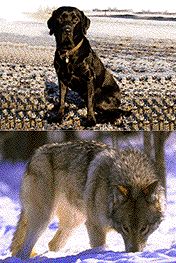Phenetic principle

In biology, one main method used to classify species into groups is the phenetic, or phenotypic, method. The phenetic method groups species according to their observable phenetic attributes: if two species look more like each other than either does to any other species, they will be grouped together.
The full classification consists of a taxonomic hierarchy of levels, such that the members of different groups at higher and higher levels look decreasingly similar to one another. For example, a wolf and a dog (same genus) look phenetically more alike than do a wolf and a dolphin which are in the same Class.
In contrast to the phylogenetic principle, nothing needs to be known about evolution in order for species to be classified phenetically. The species are grouped by their similarity with respect to observable attributes alone, and the same principle can be applied to any sets of objects, either living or non-living. An important issue in the phenetic method is the question of measuring phenetic similarity. The school of numerical phenetics is concerned with quantifying this.
Many biologists, including Michael Donoghue, have criticized the phenetic principle for lacking objectivity.
What is wrong with the phenetic principle?
| Next |



